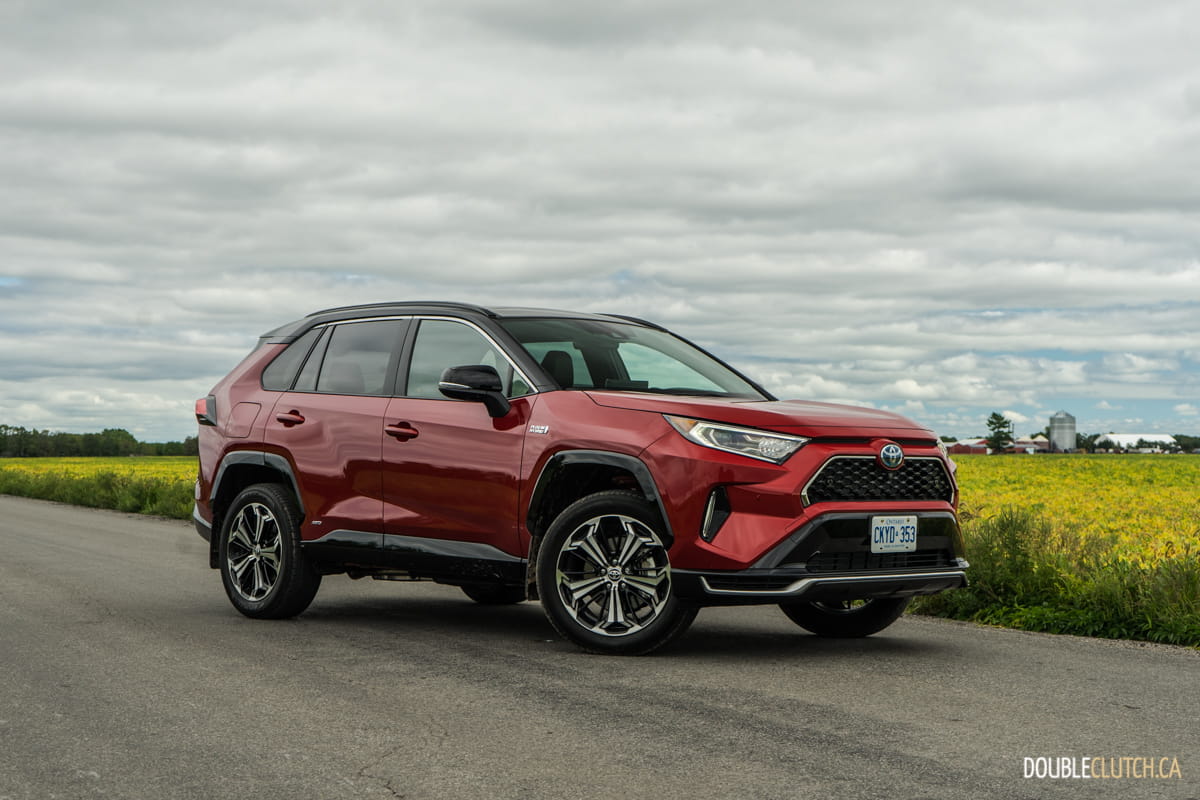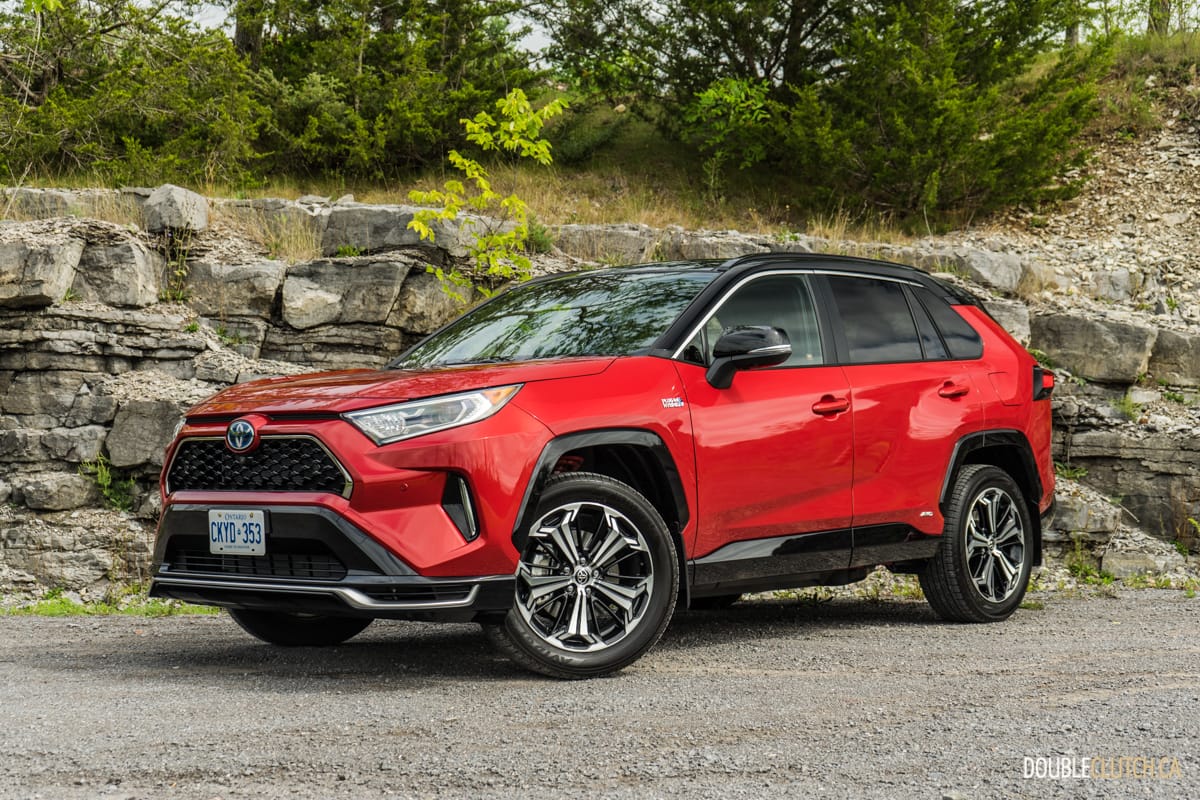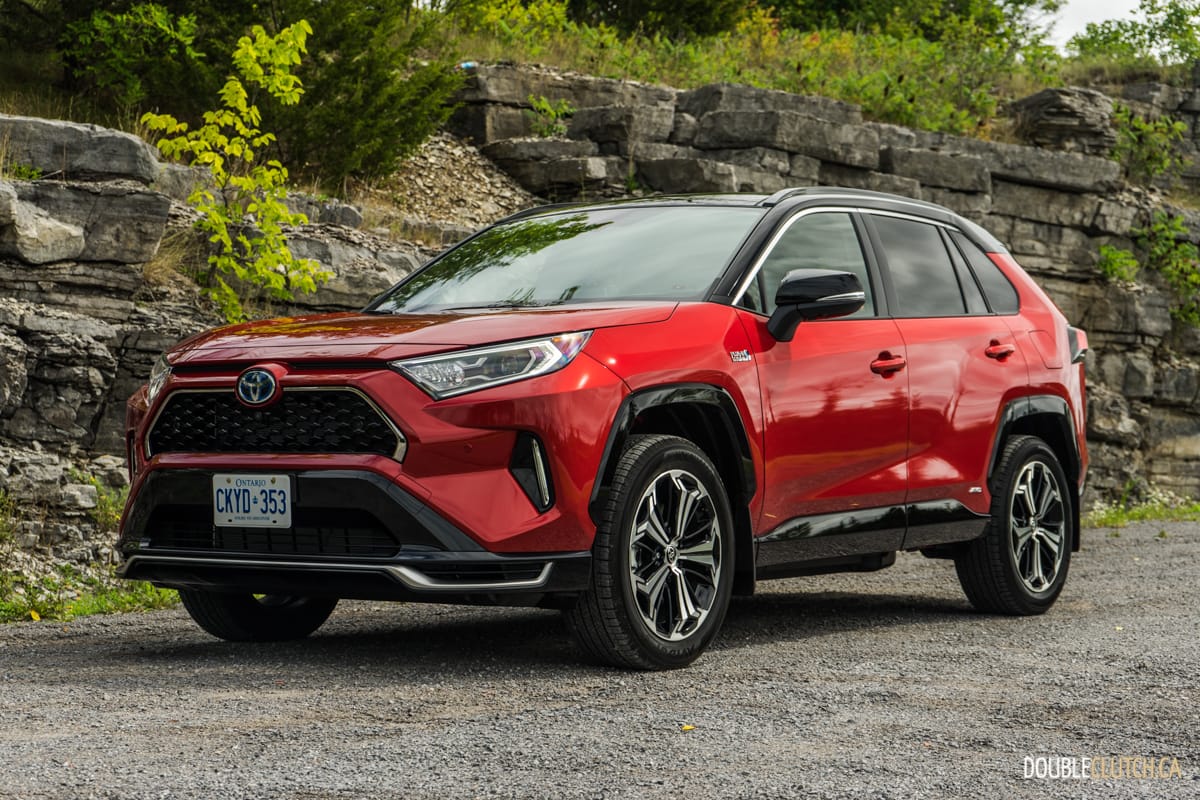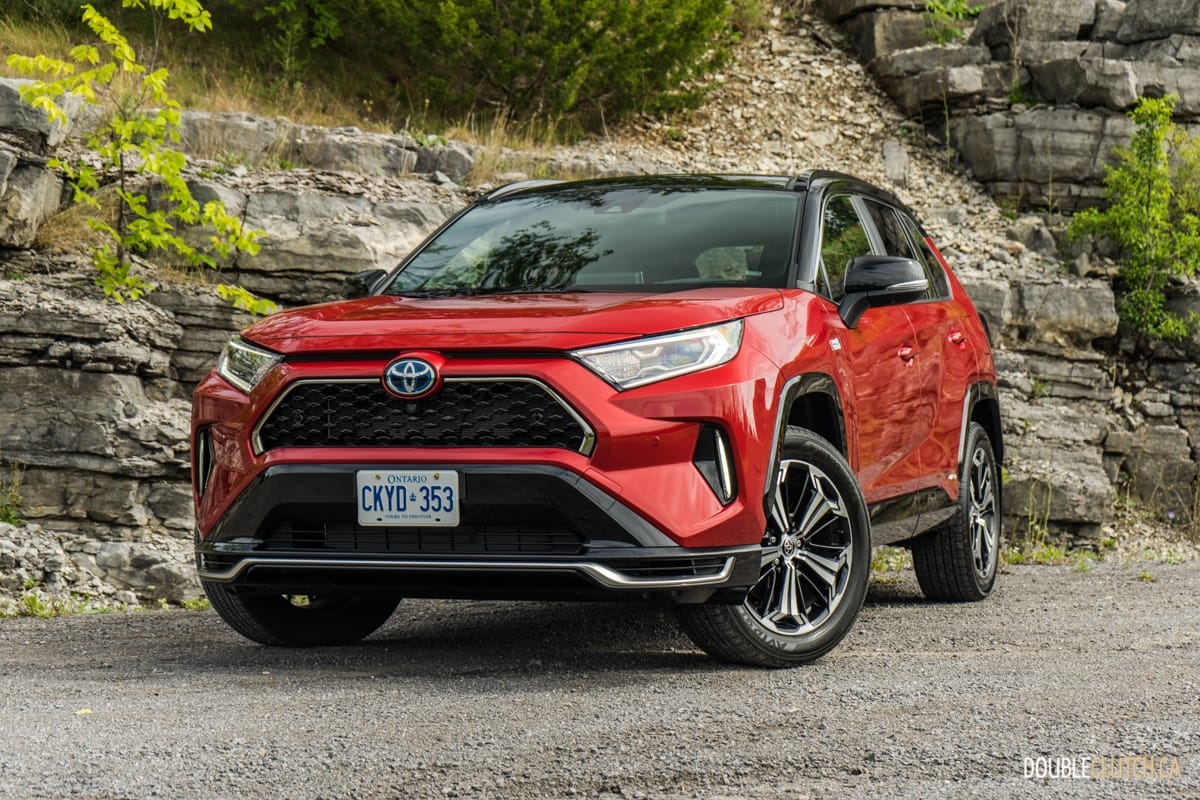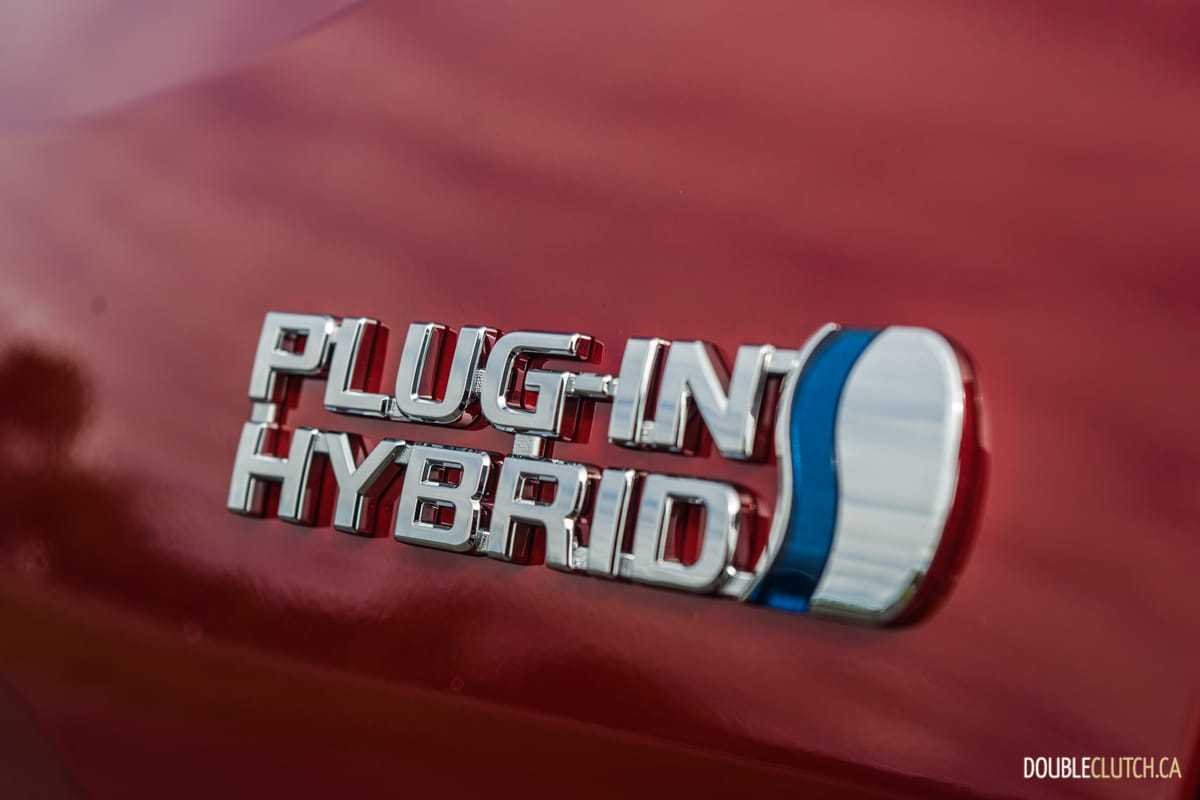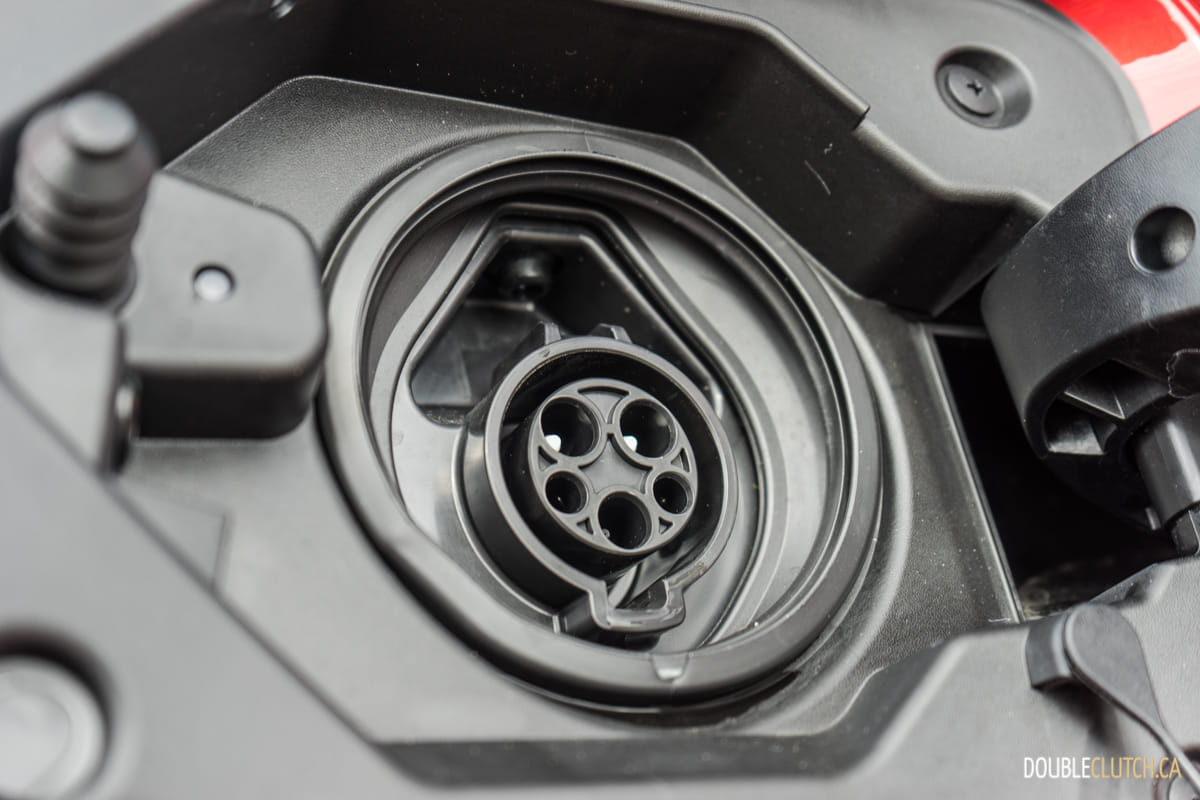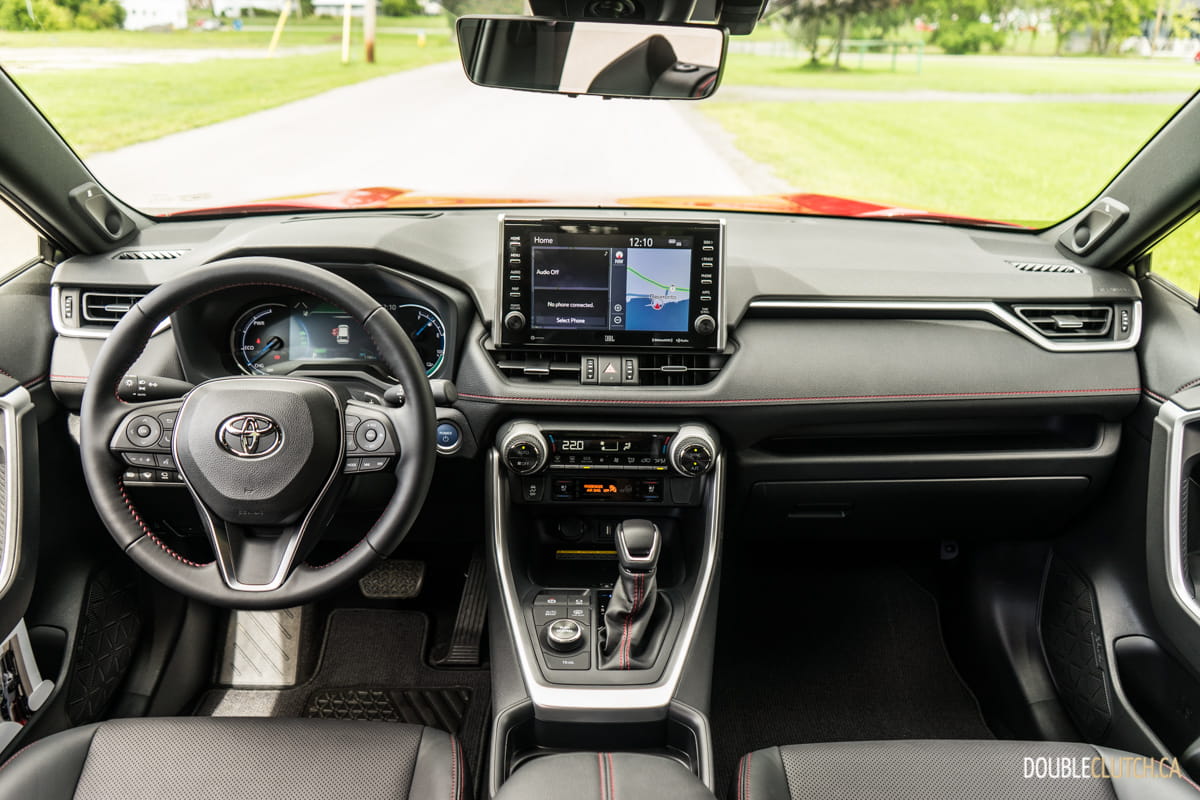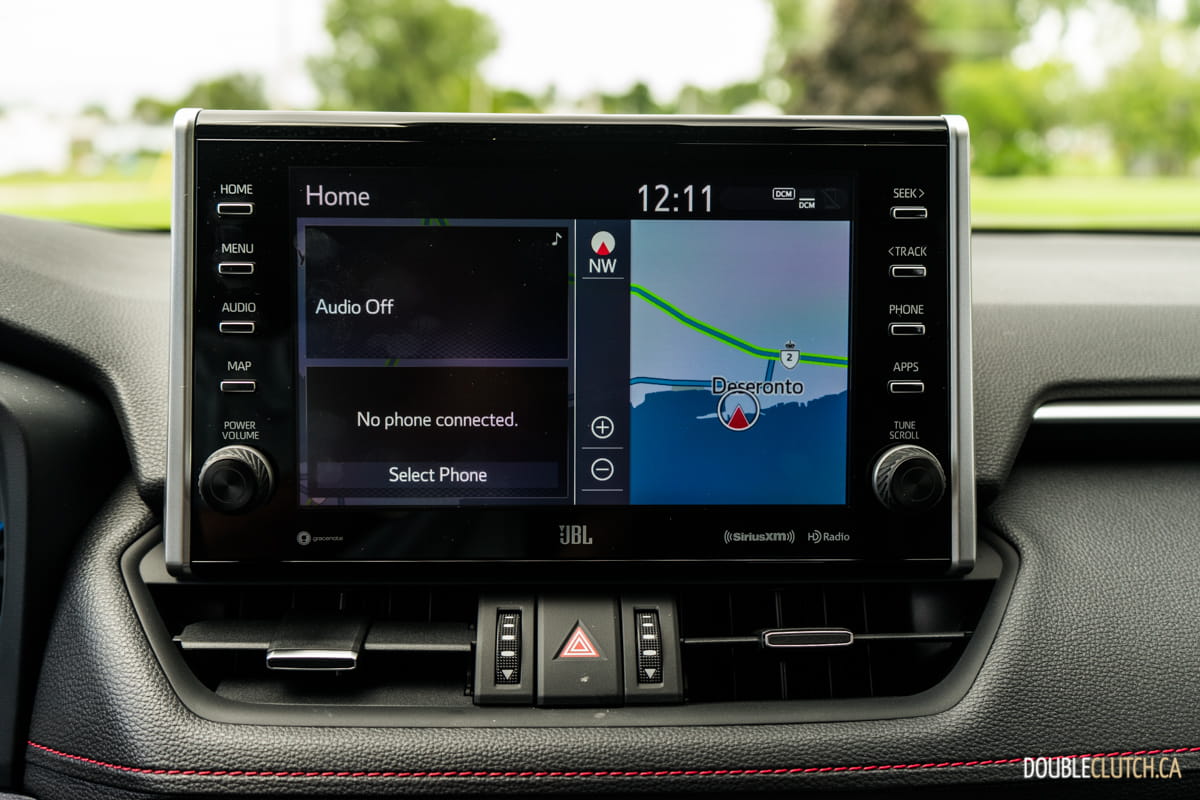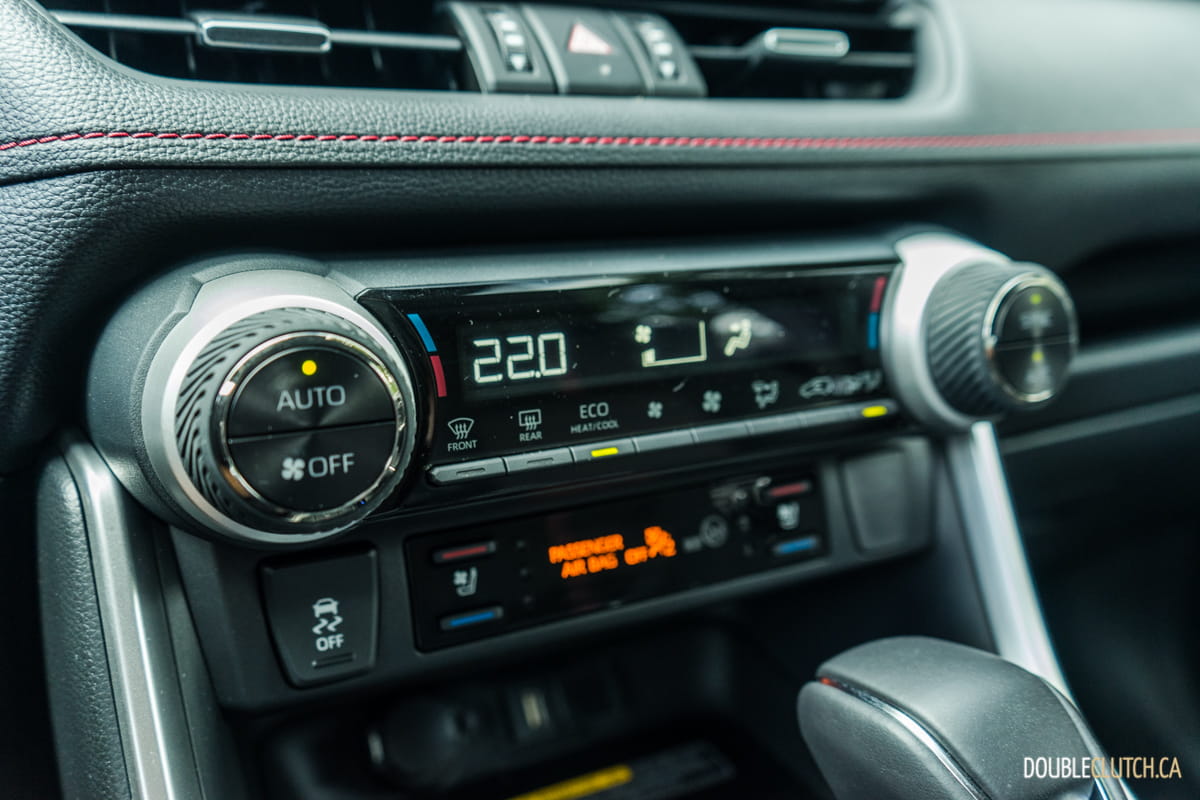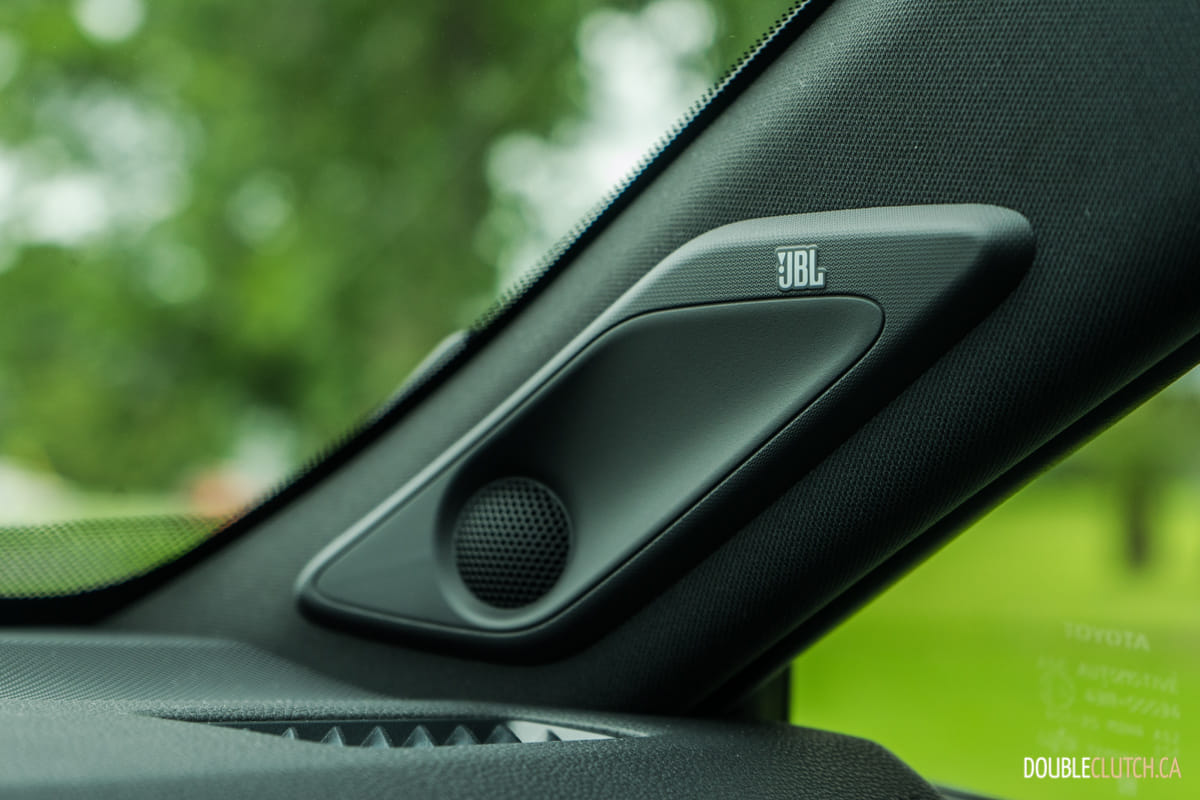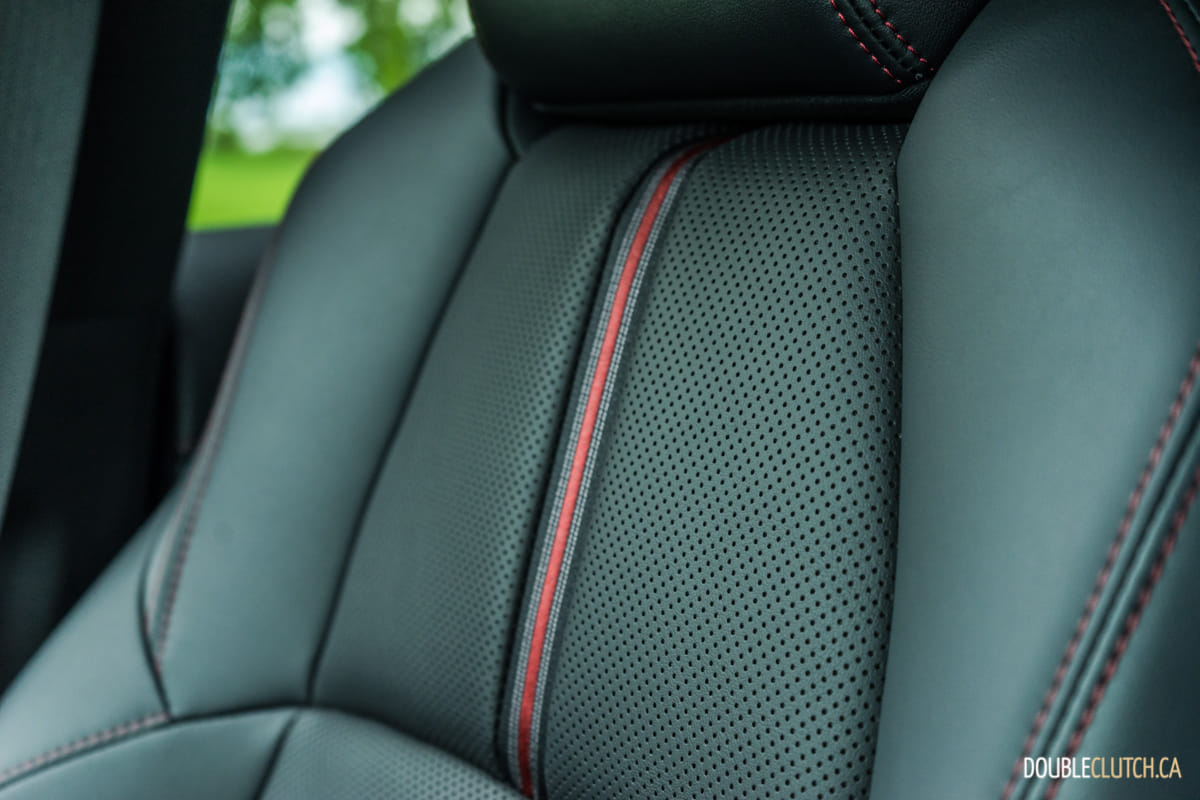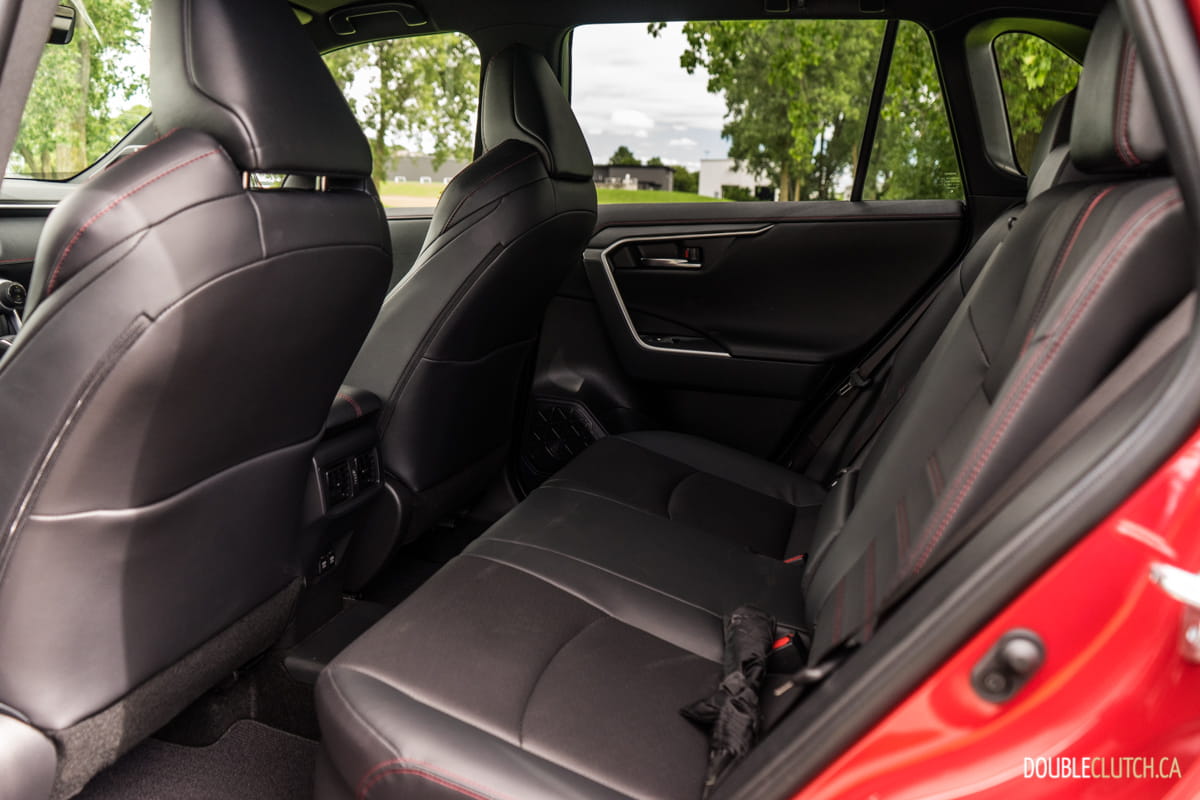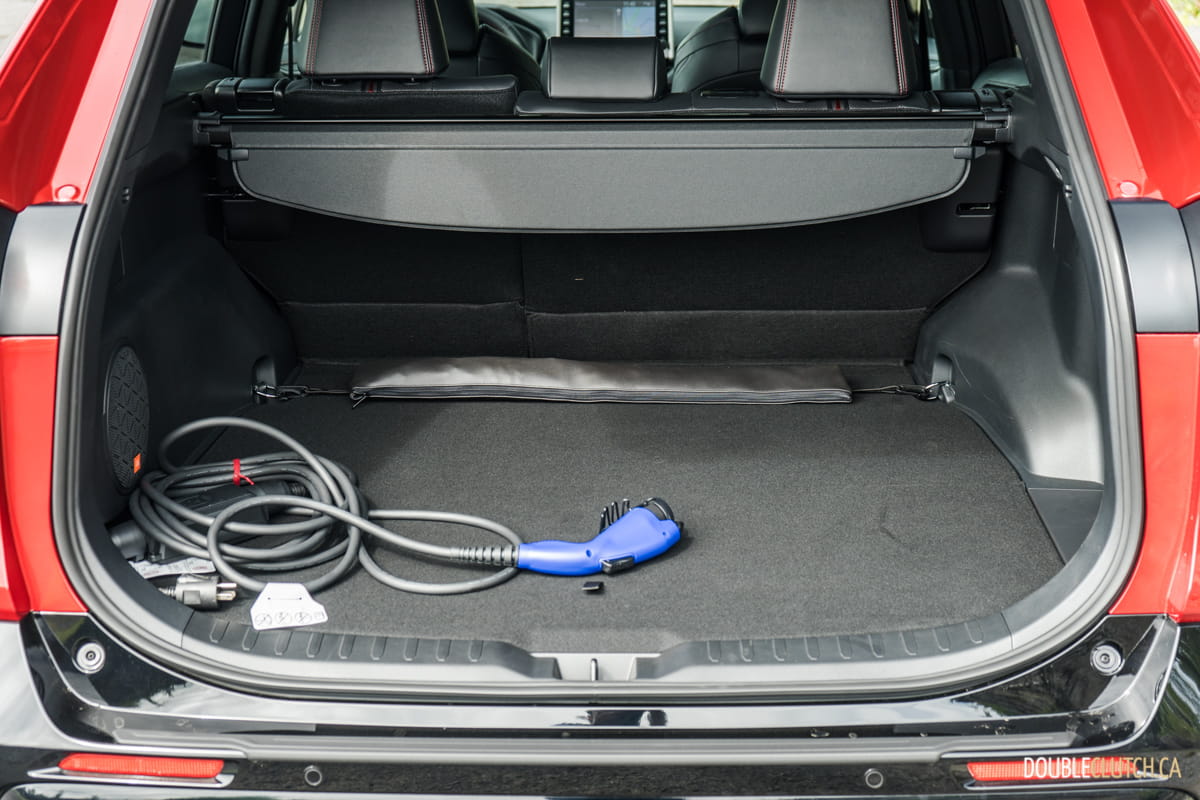KINGSTON, ON – Bar none, the current Toyota RAV4 in Hybrid form is quite possibly the best car for the average Canadian buyer. I’m not referring to the purists and enthusiasts that comprise roughly five percent of the population; I’m looking straight at the typical new car buyer that wants comfort, reliability, safety, and value for their money. Toyota has been on a roll lately, after having added hybrid power to their Corolla, and all-wheel-drive to the popular Prius. They just cranked things up a notch, however. This is the 2021 Toyota RAV4 Prime, a plug-in hybrid variant of the RAV4 that gives drivers more versatility than ever before.
The Prime is not only the most efficient variant of the RAV4, but also the most powerful model ever. No, we aren’t forgetting the V6-powered RAV4 of the late 2000s, and Toyota also claims that other than the GR Supra, the RAV4 Prime is the quickest thing in their current lineup. It’s a tenth of a second quicker to 100km/h than the Camry TRD (reviewed here), and its 6.0-second acceleration time is nothing short of impressive. Equally impressive is the rate 68-kilometer electric range, which is more than satisfactory for the commute of the typical Canadian.
On the gasoline side of things, the Prime gets a 2.5-liter inline four-cylinder that’s specially tuned for this application. On its own, it puts out 177-horsepower. It’s mated to the Hybrid Synergy Drive system that uses two permanent magnet AC motor-generators, which put out 179 horsepower and 199 lb-ft. of torque. A 53-horsepower rear motor gives the RAV4 its all-wheel-drive system, and the 18.1-kWh battery finishes things off. The result is an overall 302 horsepower, which is more than the 219 of the RAV4 Hybrid (reviewed here) and 203 in the regular gasoline variant.
Driving around Kingston and nearby picturesque Prince Edward County, the RAV4 Prime is exceptionally smooth and effortless all around. The continuously variable transmission goes completely unnoticed, without the annoying buzzy noise that comes with other applications. In its “Normal” mode when functioning like a regular hybrid, the Prime switches between power sources imperceptibly, and traverses suburbia silently and invisibly. In full-EV mode, which by the way can operate up to speeds of 135km/h, it becomes even quieter and offers oodles of torque to make off-the-line acceleration a breeze.
That 302 horsepower comes into play as well, and there’s a “Sport” mode as well. It pulls hard under full acceleration, and is prone to some torque steer as well. This is unsurprising, but regardless the RAV4 Prime remains fairly well balanced and gets up to speed with remarkable poise. Thanks to the TNGA underpinnings, which is just about the benchmark right now in the mainstream category, the RAV4 handles sharply as well. The chassis is rigid, which translates to firmer ride quality over certain road surfaces, but the benefit is top-notch steering and response.
As far as fuel efficiency is concerned, your mileage may vary depending on driving style and actual electric range usage. Despite the 68-km rating, we observed a total of 73 kilometers of EV range without any real effort to conserve it. Once this was depleted, the RAV4 functions like a typical hybrid, and we observed 5.7L/100km in combined driving, with about 100km of straight highway usage as well. Naturally, regular 87-octane fuel is all the RAV4 requires in its 55-liter tank. Those wanting to tow with their Prime can haul up to 2,500 pounds of cargo.
While the majority of the RAV4 Prime’s interior is fairly typical for Toyota’s current lineup, there are some touches unique to this model. The Prime’s theme is red, so highlights and stitching throughout the cabin is done in red. Interior space is generous with ample headroom for taller drivers as well as rear legroom, though it’s not as cavernous or quite as cleverly packaged as Honda’s CR-V. The 949-liter cargo capacity behind the rear seats is only marginally worse than the regular RAV4 Hybrid, and this is due to fitment of the plug-in hybrid components. Once the rear seats are folded down, this number grows to 1,790 liters.
The top-trim XSE gets a nine-inch touchscreen housing Toyota’s native infotainment system, as well as Apple CarPlay or Android Auto. Those using one of the latter connectivity forms won’t have any issues, but the Toyota navigation interface looks far too dated for today’s standards. It’s also clunky to use and not nearly as intuitive as we’d like. Toyota’s Safety Sense 2.0 suite is standard on all Prime models, and it includes pre-collision braking with pedestrian detection, radar cruise control, lane departure alert, automatic high beam control, lane tracing assist, and more.
The RAV4 Prime is available in two trim levels, starting with the SE at $44,990 before incentives, taxes or fees. The SE still includes 18-inch wheels, heated front and rear seats, a heated steering wheel, and eight-inch touchscreen. The XSE at $51,590 adds 19-inch wheels, a sunroof, Softex seating, a larger screen, and more. A Premium Technology Package can be added to the XSE for $5,400 and adds adaptive lighting, memory seats, ventilated front seats, heads-up display, Bird’s Eye View Monitor, 11-speaker JBL sound system, and more. The range-topper tested here comes in at $56,990.
It sounds a bit on the high side, but it’s important to remember that rebates are still available in various places throughout the country. The last Mitsubishi Outlander PHEV (reviewed here) we tested came to $51,498 and is, simply put, blatantly awful in comparison. It’s nowhere near as refined, smooth or well-equipped as the RAV4. Ford has just released their Escape PHEV, but it doesn’t offer all-wheel-drive and has considerably less power. That said, it’s a little bit cheaper, as well.
As it stands, the 2021 Toyota RAV4 Prime has already achieved the status of segment leader. Sales of the regular and hybrid variants of the RAV4 are exceptional, with the vehicle being the best selling passenger vehicle in Canada, as well as the top selling SUV in Canada for four years straight. Even a solid year after its debut, those wanting a RAV4 Hybrid today will have to wait upwards of three months, and those wanting a Prime may be out of luck for another year. Toyota is starting with a multi-phase roll out in Canada, beginning with Quebec only. Supply will only get better, but for now, if you want any shot at the new Prime, it’s worth putting down a deposit literally yesterday.






